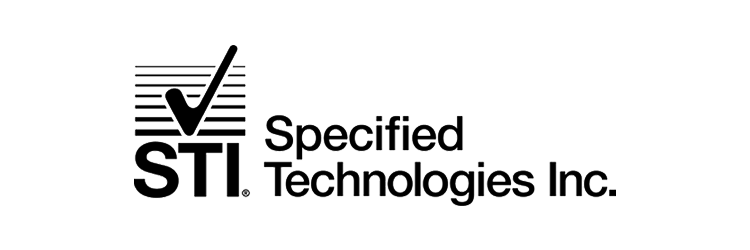Northeast
EVENT THEME
Detailing High-Performance Facades: Strategy, Specifications, and Advanced Cladding Materials
Today’s high-performance facade standards require the deft balancing of aesthetics, technical detailing, and the demands of the client and local building regulations. This workshop will discuss both material and technical solutions to meet those standards. Experts will be on hand to lead tutorials on the most recent innovations in rainscreen cladding, sealant solutions, and much more. Attendees will leave with a greater knowledge of material applications at the cutting-edge of energy performance and code compliance, all while learning of attractive solutions for clients and end users.
view_agenda Agenda
10AM - 11AM
Credit type: 1 AIA HSW LU
Provider: STI Specified Technologies
This course provides a comprehensive overview of the latest developments in perimeter fire containment systems specifically for steel stud/exterior sheathing assemblies incorporating both EIFS and noncombustible rainscreen insulation. In today’s rapidly evolving and intricate world of exterior wall design, appreciating the intricacies of an evolving wall type is of paramount importance. By recognizing the distinctive challenges posed by these assemblies during the design phase, participants can proactively prevent costly changes, project delays, and potential compromises to life safety requirements prior to the construction.
Learning Objectives
- Recall recent updates and IBC code changes related to perimeter fire containment as tested per ASTM E2307.
- Explain how steel stud exterior wall assemblies are tested in accordance with ASTM E2307 and understand the significance of independent third-party published design listings for perimeter fire containment systems.
- Apply the knowledge of ASTM E2307 testing to evaluate the impact of fire on steed stud exterior wall construction and specific construction materials involved.
- Recognize the value of ASTM E2307 published listings in the context of the evolving and complex nature of curtain wall designs such as steel stud exterior wall assemblies.
11AM - 12PM
Credit type: 1 AIA HSW LU
Provider: Porcelanosa
This course discusses the rain screen system for exterior facades using porcelain tile or solid surface
Learning Objectives
- Participants should be able to correctly define various types of exterior cladding systems.
- Participants should be able to identify the major components/features of the ventilated facade system.
- Participants will gain an understanding of the advantages of the ventilated facade when compared to other cladding systems.
- Participants will gain an understanding of appropriate use of the ventilated facade system.
12PM - 1PM
Credit type: 1 AIA HSW LU
Provider: Atlas Roofing
This webinar explores how strategic continuous insulation (CI) choices can alleviate the pressures on building enclosures & elevate building envelope performance, sustainability, durability, and life safety. Attendees will gain insights into NFPA 285 compliance, the role of CI in rainscreen systems, and key considerations behind insulation material selection. The course highlights key attributes for comparing insulation types—such as R-value, thickness, installation, and environmental impact—and suggests design opportunities using higher-performance products insulations. Through real-world assemblies and best practices, participants will learn how to simplify insulation choices across multiple applications to meet evolving codes, optimize wall assemblies, reduce thermal bridging, and even reclaim interior square footage. Discover how doing more with less supports design efficiency and construction practicality.
Learning Objectives
- Identify how insulation selection impacts NFPA 285 compliance and understand how different assemblies perform with various continuous insulation materials under varying environmental pressures.
- Evaluate sustainability attributes, installation efficiencies, and design flexibility of continuous insulation types for maximizing thermal performance and minimizing installation complexity.
- Explore rainscreen applications and determine critical design & installation considerations for integrating continuous insulation effectively across varied enclosure types.
- Dissect how high R-value insulation can reduce wall thickness, simplify attachment systems, and reclaim usable space within building envelopes.
1PM - 2PM
Credit type: 1 AIA HSW LU
Provider: Schöck
Concrete slabs and steel beams that project through the building envelope, such as those used in balconies, canopies and parapets, break the insulation layer and create thermal bridging. Incorporating a thermal break significantly improves the thermal performance of building envelopes and helps avoid costly issues down the road. This course addresses thermal bridging solutions, as well as design best practices and local building code requirements related to structural thermal breaks.
Learning Objectives
- Understand how, why and where thermal bridging occurs.
- Identify the three main problems caused by thermal bridging.
- Discuss the pros and cons of different approaches to addressing the problem.
- Know how, when and why to use structural thermal breaks, including local code compliance.
2PM - 3PM
Credit type: 1 AIA HSW LU
Provider: Northern Facades
Reaching towards Net Zero energy ready buildings is becoming a popular topic in todays climate changing world. Energy efficiency has expanded towards exterior wall assemblies where effects of thermal bridging are considered and thermally broken sub-framing systems are becoming the new norm. This course will identify and compare various cladding attachment methods on the market. Learn how to determine the appropriate clip for your project and how to compare effective thermal resistance required to achieve projects targeted R – Value.
Learning Objectives
- In this presentation you will be able to understand how the use of thermal clips will impact thermal bridging on various exterior wall assembly applications.
- Identify types of clips currently on the market.
- Learn how to calculate the number of clips required on your project by identifying structural forces involved to determine clip spacing.
- Gain insight on how the NFPA 285 fire code applies to thermal clips.
- Acquire a new ability to effectively detail thermal clips on architectural drawings.














